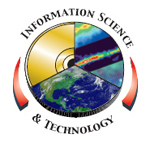
Please Note: The content on this page is not maintained after the colloquium event is completed. As such, some links may no longer be functional.
Steven Hughes
Trajectory Optimization using the General Mission Analysis Tool (GMAT)
Wednesday, September 26 2007
Building 3 Auditorium - 3:30 PM
(Refreshments at 3:00 PM)
Developing optimal trajectories for modern space missions is challenging and can seemingly involve mutually exclusive requirements and mission objectives. From a science perspective, the coupling of the orbit design and the science return requires careful trajectory design to maximize science data quality or mission life. From the perspective of a mission analyst working on trajectory optimization for space missions, it is desirable to have flexible methods that can be applied to many problems, that can handle real-world mission requirements and constraints, find an optimal solution in a reasonable amount of time, and converge consistently with relatively poor initial guesses.
This talk will present examples of trajectory optimization techniques applied to GSFC missions, using the General Mission Analysis Tool (GMAT). GMAT is an open source mission analysis and trajectory optimization system developed by GSFC and private industry. We'll begin by discussing some general issues in trajectory optimization, and move quickly to practical examples that illustrate the power and complexity of applied trajectory optimization.
Steven Hughes is an aerospace engineer in the Flight Dynamics Analysis Branch at Goddard Space Flight Center. He is currently the GMAT Project Manager and also works on formation flying orbit design for the Magnetospheric Multiscale Mission (MMS). He earned B.S and M.S degrees in aerospace engineering from Virginia Tech. His interests include trajectory design, optimal control, photography, and music among others.
IS&T Colloquium Committee Host: Jacqueline LeMoigne-Stewart
